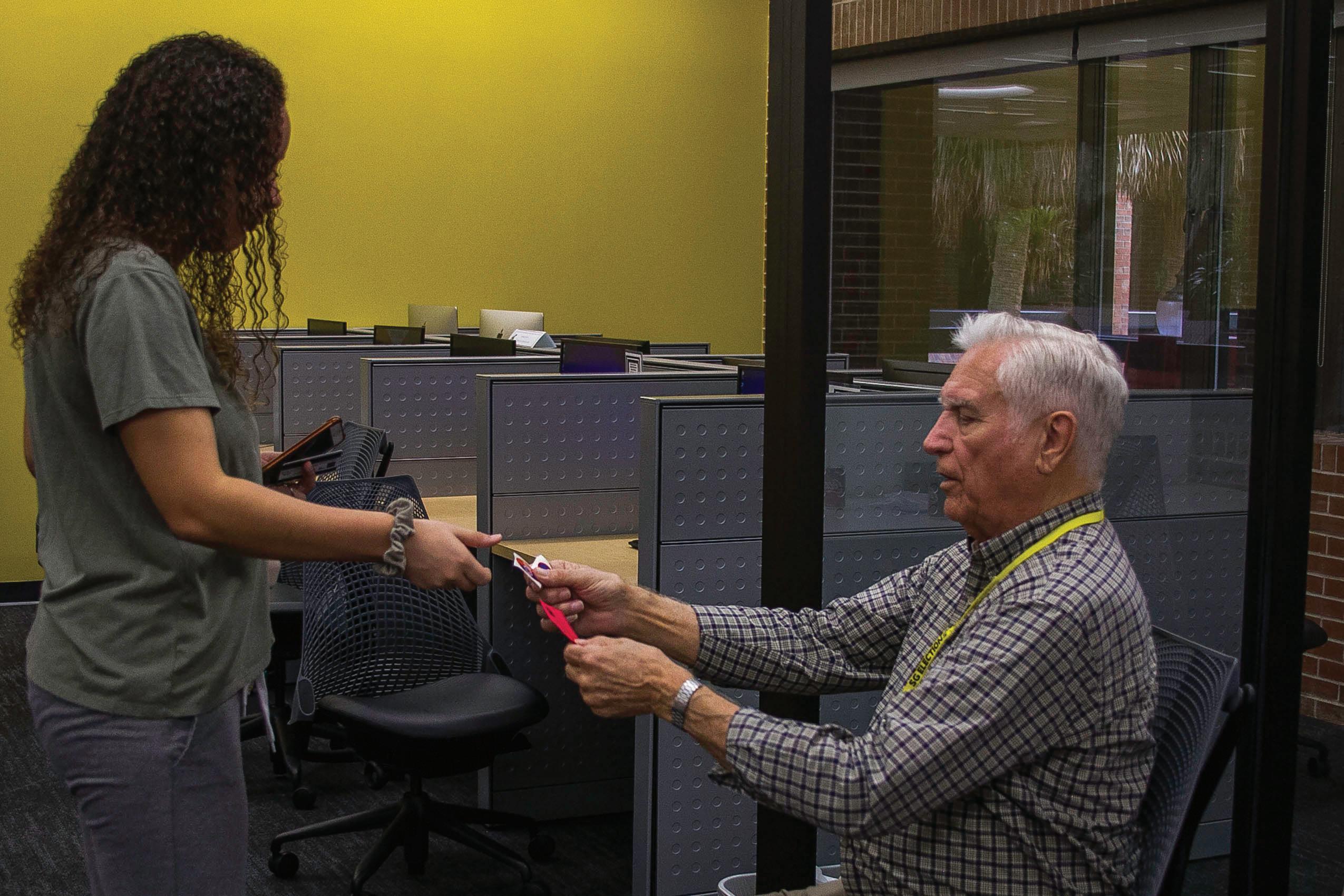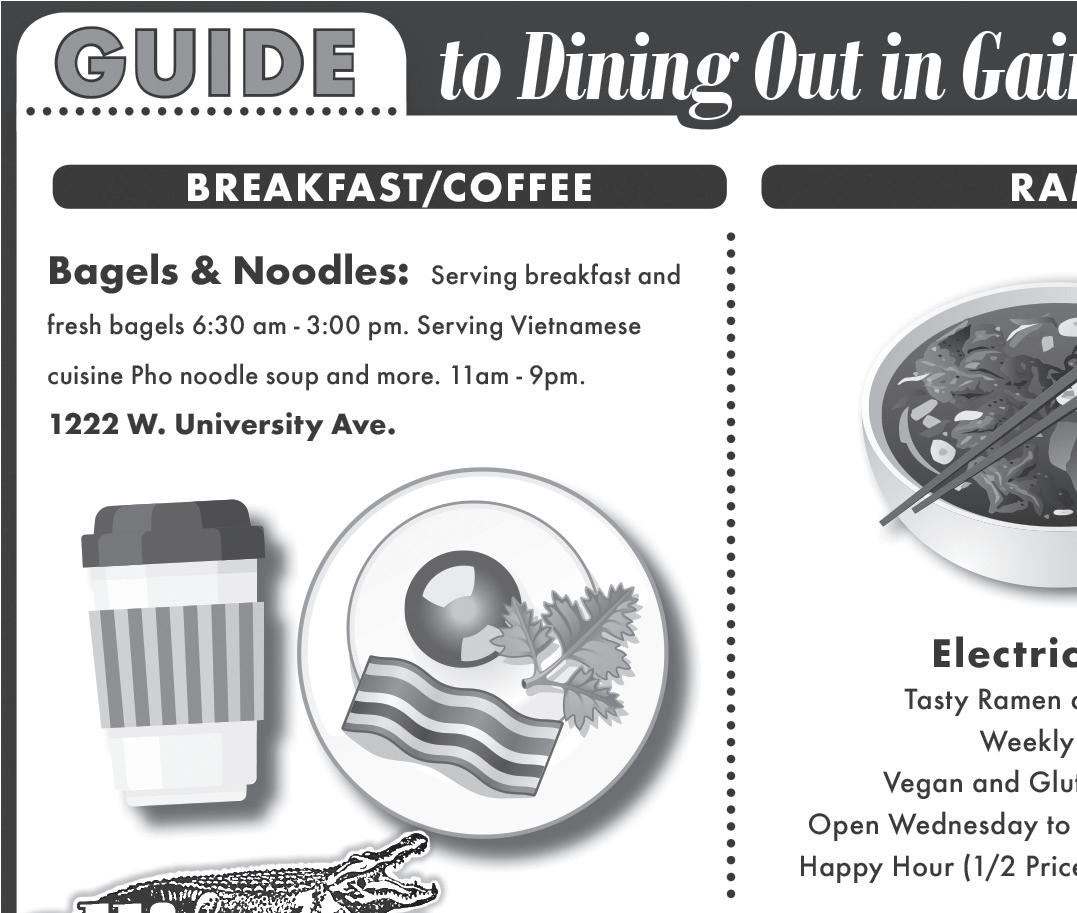8 ALLIGATOR WEDNESDAY, FEBRUARY 19, 2020
MUSIC
Rate and Review: Tame Impala “The Slow Rush” An album of heartfelt pop songs to heal your relationship issures By Christopher S. Cann Avenue Staff Writer
An epiphany brought the world “Currents” from Australian multi-instrumentalist Kevin Parker, 34. “The Slow Rush” is a continuation in the direction of genre-bending pop music. This epiphany described by Parker occurred in Los Angeles while he was high on cocaine and shrooms; he realized how incredible the Bee Gees sounded in a technical and emotional sense. The cocktail of psychedelics and the Bee Gees granted Parker a massive and well-deserved hit album, “Currents,” peaked at number 4 on the Billboard Top 200 list in 2015, was nominated for a Grammy and had its lead hit single, “The Less I Know The Better,” rack up nearly half a billion listens on Spotify. “Currents” pushed the indie darling into the spotlight and established Parker as the frontman in one of this generation’s most-loved rock bands. Five years later, the group is back with a new album. The dust has settled, the party’s over, everyone has gone home, can he sustain the hit-making momentum he achieved on “Currents”?
Astonishingly, yes. Parker flexes every one of his music muscles. The album lacks guitars and distortion but in its place is something more exciting: a masterful record bearing selective and electronic elements. “The Slow Rush” is a detailed opus that picks and chooses its musical influences from R&B and Disco to acid house and 90s boombap hip-hop. Parker is behind all of it — twisting each knob and arranging every drum pattern. In the interim between albums, Parker worked with hip-hop powerhouses like Kanye West and Travis Scott. The way these hip-hop producers combine genres under one roof seemed to influence the way Parker puts his songs together on “The Slow Rush.” Parker has no need to sample others; he creates sounds others want to sample. “Currents” single “Let It Happen” features iconic self-samples, but the technique is much more prominent on “The Slow Rush.” “The Slow Rush” is a transitional album but one of dissatisfaction and fickle fame. In the single, “It Might Be Time,” Parker laments his unfulfillment despite his newfound fame and the existential worry it brings: “It might be
time to face it/It ain’t as fun as it used to be, no/ … You ain’t as young as you used to be/ It might be time to face it/You ain’t as cool as you used to be, no.” “One More Year” is the album’s moody opener, and it sets the tone of the record from the beginning of its echo-soaked vocals. As a steady beat and glitchy loop establishes themselves, Parker wonders about his connection to the places outside his studio and his own head: “Do you remember we were standing here a year ago/Our minds were racing and time went slow/If there was trouble in the world, we didn’t know/If we had a care, it didn’t show.” Lead single “Borderline” is a pop hit all about his current life deep in the trenches of the Los Angeles music scene. “There I go/ Quite a show for a loner in LA/Askin’ how I managed to end up in this place/And I couldn’t get away.” In an album of multi-part epics, some sections are bound to feel uneventful and disappointing. “Lost in Yesterday” comes off as dated with its Daft Punk vocals and dub effects; songs like “Tomorrow’s Dust” and “Posthumous Forgiveness” go on for a verse too long. If “Currents” is Parker’s breakup album, “The Slow Rush” follows his marriage. Recurring themes on the album are the passage of time, dissatisfaction with celebrity life and the death of his father. “Posthumous Forgive-
ness” pulls apart his troubled relationship with his father, using heartbreaking candor and a small child’s excitement “I wish I could tell you about the time I had Mick Jagger on the phone.” “The Slow Rush” is a record that will lead listeners to dance with tears in their eyes. Rate: 8/10 ccann@alligator.org @chrstophercann
has published over 100 scientific papers while at UF. While he finds it difficult to balance his professional responsibilities and his musical endeavors, he values both spheres of his life equally. “They are both what I am, I can’t deny either of these things,” Martin said. “The most miserable parts of my life have been the times when I’ve denied music and not found the time for it.” While Martin acknowledges that the idea of a chemistry professor doubling as a musician might be surprising to some, he believes that the world’s greatest scientists were all brilliantly creative people. “I’ve always done my science like art,” Martin said. “For me, there is no discrepancy between what I do music musically and what I do scientifically. It’s all about creativity.” Missy Shabazz, Ph.D., is a lecturer at the College of Liberal Arts and Sciences Department of Mathematics. When she’s not busy solving calculus equations, she can be found in the dojo where she’s been practicing Taekwondo on-and-off since 2001. Today, she’s a third-degree black belt and teaches the art three to five times a week. “I love the discipline, I love the beauty, I love the competition,” Shabazz said. “I love the exercise. I love the people.” Shabazz encourages everyone to try martial arts. “Everyone is right for martial arts,” she said. “It’s excellent for your body. It’s amazing exercise and gives you small goals to reach. There’s always something new to learn, whether it’s a new style, a new weapon or working on a new rank.”
Shabazz says the flexible teaching hours she has at UF allow her to pursue this passion. “There are lots of class options to work around your schedule,” she said. José Valentino is a professor at the College of the Arts School of Music — he’s also a Grammy winner. Valentino began playing music professionally when he was 14 years old. Since then, he’s been nominated for three Grammys and in 2019, he was a featured soloist and participating recording engineer on the Grammy-winning album “Todo Pasa.” Despite his success in music, Valentino says he doesn’t feel inclined to choose one career over the other. “I think we are living in the new renaissance age where people are encouraged and expected to exercise their polymath skill sets and passions to the fullest,” he said. Valentino doesn’t feel that doing one of his jobs inhibits the growth of the other. In fact, he feels as though his roles as a music teacher and a musician exist codependently. “The truth is people no longer live in an era where they are expected to let go of one expression for the sake of the other,” he said. “These days, creative professionals are encouraged to manage all expressions of their skills and passions to enjoy a bountiful and meaningful career.”
SPOTIFY
Sick of love instead of lovesick? Listen to the Avenue staff’s favorite anti-love songs.
LIFESTYLE
Off The Clock FROM PUNCHING BAGS TO DRUM SETS, HERE’S HOW UF PROFESSORS KICK IT OUTSIDE OF THE CLASSROOM By Nora O’Neill & Cassandra Perez Avenue Editors
University professors, despite popular belief, have lives outside of the lecture hall.
Charles “Chuck” Martin, a distinguished professor at the College of Liberal Arts and Sciences Department of Chemistry, first became interested in recording music when he moved to Gainesville in 1999. Since then, he’s released nine albums. His latest, “Are You In Love?” grapples with the idea that without love in your life, it’s impossible to be happy. Martin believes that being a musician allows him to be an effective teacher. “I think there’s a natural overlap between these two pursuits, and that is performance,” Martin said. Martin also runs a research group and
Courtesy of Amy Lynn Martin
Charles “Chuck” Martin, a chemistry professor at UF, recently released his ninth album, “Are You In Love?”
@cassandraperez0 cperez@alligator.org
@noroneill noneill@alligator.org







